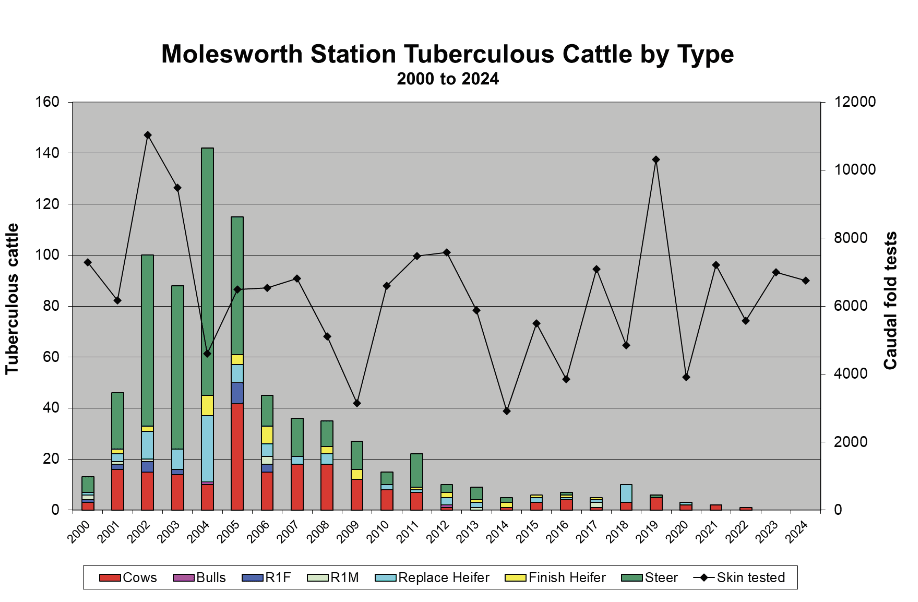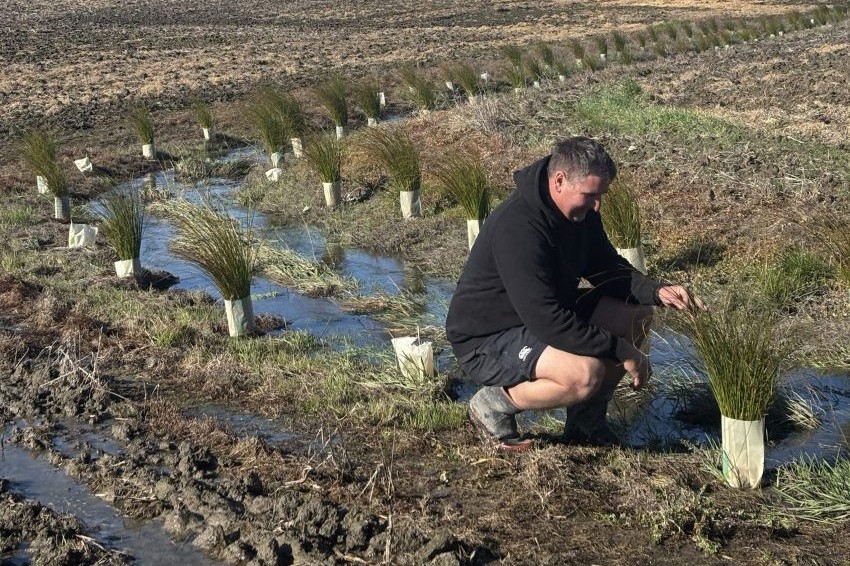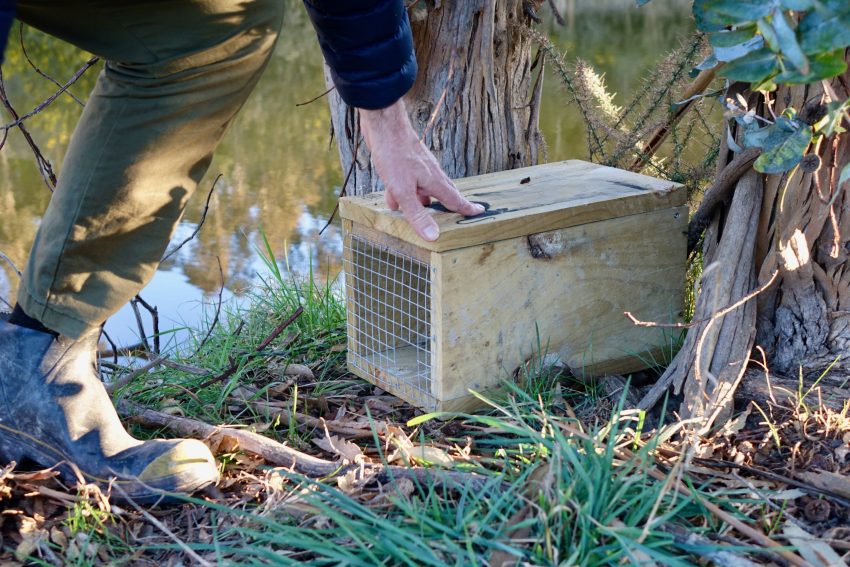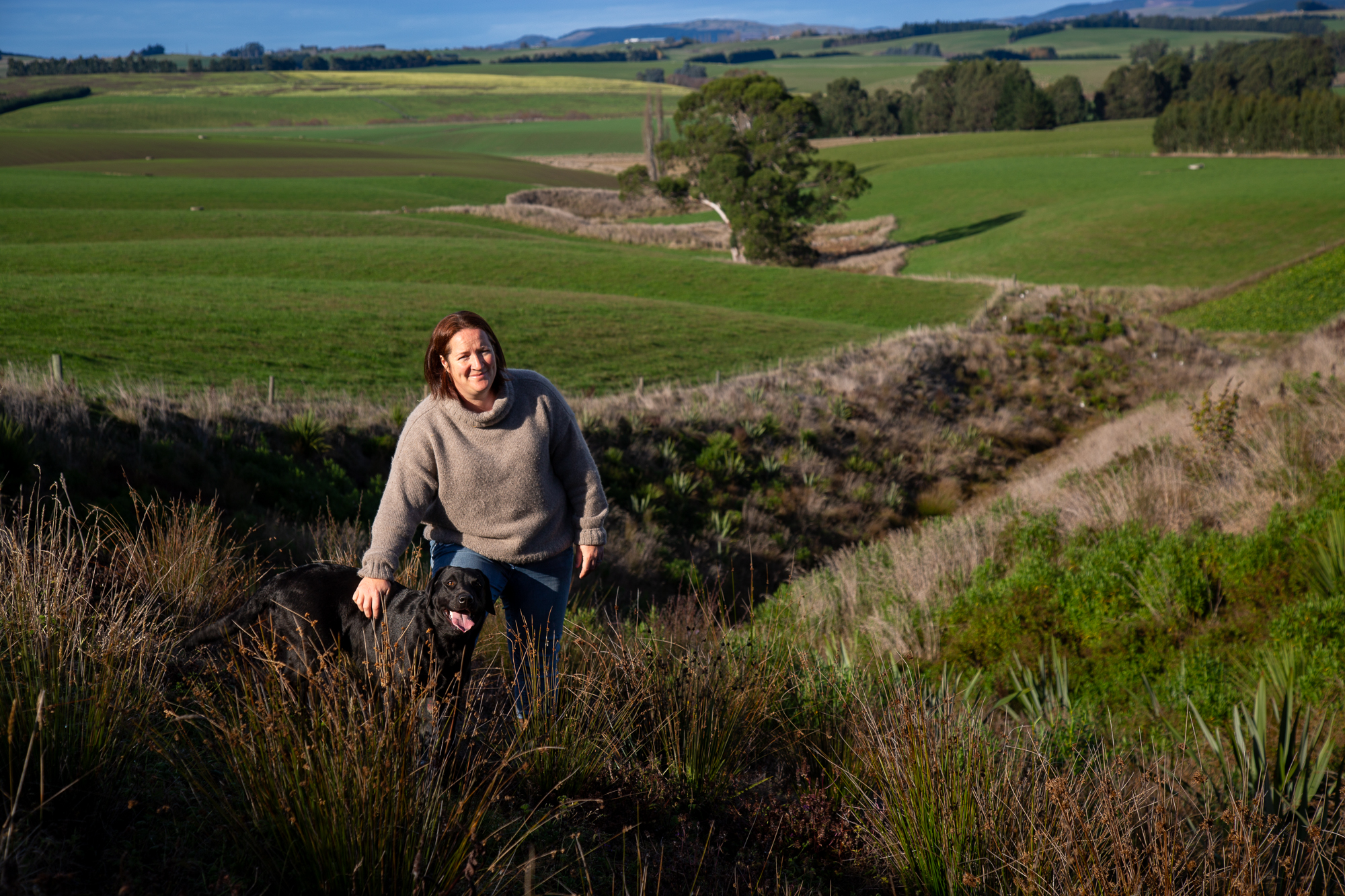TB-free milestone for Molesworth Station
A major milestone has been achieved after four decades of managing TB at Molesworth Station, marking one of New Zealand’s most determined and complex biosecurity challenges. Words Sarah Perriam-Lampp, Photos Kara Tait.

New Zealand’s largest working farm has achieved TB-free status of C1 this year which is being hailed as both a scientific victory and a testament to collaborative perseverance between Molesworth Station operator Pāmu Farms of New Zealand (Landcorp Farming Limited) and OSPRI. It’s an accomplishment that couldn’t have been achieved without the backing of all of the country’s cattle and deer farmers supporting OSPRI’s work through levies.
The history of the outbreak at Molesworth Station: Molesworth has had the country’s longest continuous Bovine tuberculosis (TB) infected herd status since 1972.
“We were hit with a huge outbreak the first year I arrived in 2001, with 141 three-year cattle reacting to the TB test which was a costly and daunting beginning as manager,” reflects Jim Ward, Molesworth Station Farm Manager. “I had it written in my contract as a KPI to get rid of TB – I thought it would take five years.”
With 182,000ha to manage, localised poison operations weren’t making a difference, so at the advice of the OSPRI TBfree programme they moved to full-scale aerial possum control over tens of thousands of hectares which proved a pivotal milestone on their eradication journey.
“I paused when I wrote C1 on our ASD form as I’d been writing ‘I’ (for infected) for 24 years. I actually took a photo of it! But the real hard work of keeping it starts now.” – Jim Ward, Farm Manager, Molesworth Station
“We actually bit the bullet and dropped cereal bait with a toxin over 60,000ha in one go and that’s when we actually started to see real progress,” says Jim.
The OSPRI-funded programme led to the understanding in the role that the combination of both pigs, possums and ferrets play in carrying and/or spreading the disease was the foundation of the strategic programme towards TB eradication at Molesworth.
While possums are known as the primary wildlife carrier and spreader of TB, and can be reduced by aerial application of 1080 and follow-up maintenance trapping, learning more about pigs and ferrets played a surprisingly important role in how they tackled the outbreak.

Jim had believed that pigs must be a major transmitter of the disease when they tested 61 pigs and 52 had lesions indicating TB. However, through extensive research conducted by Landcare scientists, it became clear that while pigs carry TB they are considered sentinels (an indicator of the presence of disease) and their role was to pinpoint the infection hotspots.
“They scavenge, often by consuming infected carcasses,” explains Jim. “Our pig eradication strategy became to ‘farm’ the population to use them as our useful surveillance tool.”
While OSPRI’s TB Programme has now completed possum control in the area, Pāmu and OSPRI are aware how crucial ongoing surveillance work of both wildlife and livestock is to stay on top of TB. While the herd is currently clear, proving the landscape free of TB involves the collection of data over several years and then an independent panel’s sign off.
In addition to fencing and general work at Molesworth, Pāmu employs pest control efforts from their staff. Dennis Neal has played a vital role in the TB eradication efforts at Molesworth Station for nearly 15 years, trapping and night shooting ferrets and feral wild cats. Ferrets, while not spreading TB, also act as environmental indicators like pigs.
Alongside OSPRI’s intensive ground and aerial programme on Molesworth Station from 2017, Dennis has become deeply knowledgeable about predator behaviour and trap placement. He has often outperformed computer-generated models with his on-the-ground experience using his specially trained spaniels to locate lost traps and detect feral animals.
“Getting on top of the ferrets is rewarding also for the pride of removing the environmental impact these predators have on lizards and birds’ eggs too.”
OSPRI Chief Executive Sam McIvor says Molesworth’s journey is an excellent example of the partnership required in an eradication endeavour.
“The station has been home to several significant research projects on the reduction and elimination of Bovine TB and control which has involved innovating and trying different approaches,” says Sam. “Our work at the station is also an important plank
in the broader North Canterbury Marlborough TB control strategy, involving other farms.”
Jim highlights how it’s been a classic example of when science and technology met farmer knowledge, and innovation is created on a level playing field.
field.
Senior Disease Management Veterinarian for OSPRI New Zealand, Kevin Crews says Jim’s practical insights were instrumental. “Jim brought to the table what would work and what wouldn’t work on Molesworth. We didn’t always agree but we got to a happy place.”
Together, they bridged science and experience, ultimately proving that combining large-scale possum control with consistent ground operations was the key. Their teamwork transformed years of struggle into a national success story. The foot isn’t coming off the throttle yet under Jim’s watch as they work hard to not only maintain Molesworth’s cattle clear of TB, but reach the ability to sell stock off farm rather than the limiting self-contained farming model they have with their leased finishing block at Hanmer.
Managing TB in NZ 101
New Zealand has a world-leading approach of collaboration between government and industry to tackle biosecurity risks like Bovine tuberculosis (TB).
Our nationally co-ordinated programme delivers on-farm TB testing and meatworks inspection, livestock movement controls and possum population management.
With decades of work and investment, New Zealand is close to eradicating Bovine TB from farmed livestock with just 14 infected herds* out of around 75,000.
What you can do to help keep up the efforts:
- Make clean-up and careful disposal of offal a condition of hunting at your property.
- Undertake possum control on the farm – by baiting, trapping or spotlighting. If you have winter feed crops close to bush lines that’s a great place to trap.
- Make sure your animals are tagged and then registered with NAIT and record animal movements off farm within 48 hours.
- Get involved in a local OSPRI committee which brings farmers and OSPRI together to work on eradicating the disease.
Visit ospri.co.nz




